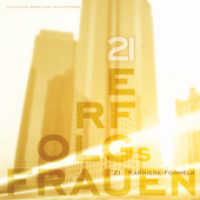- ホーム
- > 洋書
- > 英文書
- > Science / Mathematics
Full Description
Due to recent advancements in the development of numerical algorithms and computational hardware, computer simulations of biological membranes, often requiring use of substantial computational resources, are now reaching a mature stage. Since molecular processes in membranes occur on a multitude of spatial and time scales, molecular simulations of membranes can also serve as a testing ground for use of multi-scale simulation techniques.
This book addresses some of the important issues related to understanding properties and behavior of model biological membranes and it
Shows how simulations improve our understanding of biological membranes and makes connections with experimental results.
Presents a careful discussion of the force fields used in the membrane simulations including detailed all-atom fields and coarse-grained fields.
Presents a continuum description of membranes.
Discusses a variety of issues such as influence of membrane surfaces on properties of water, interaction between membranes across water, nanoparticle permeation across the membrane, action of anesthetics and creation of inhomogeneous regions in membranes.
Discusses important methodological issues when using simulations to examine phenomena such as pore creation and permeation across membranes.
Discusses progress recently achieved in modeling bacterial membranes.
It will be a valuable resource for graduate students, researchers and instructors in biochemistry, biophysics, pharmacology, physiology, and computational biology.
Contents
Contents
Series Preface . . . . . . . . . . . . . . . . . . . . . . . . . . . . . . . . . . . . . . . . . . . . . . . . . . . . . . . . . . . . . . . . . ix
About the Editor. . . . . . . . . . . . . . . . . . . . . . . . . . . . . . . . . . . . . . . . . . . . . . . . . . . . . . . . . . . . . . . xi
Contributors . . . . . . . . . . . . . . . . . . . . . . . . . . . . . . . . . . . . . . . . . . . . . . . . . . . . . . . . . . . . . . . . . xiii
1. Force Fields for Biomembranes Simulations . . . . . . . . . . . . . . . . . . . . . . . . . . . . . . . . . . . . . . . 1
Alexander P. Lyubartsev and Alexander L. Rabinovich
2. Mesoscopic Particle-Based Modeling of Self-Assembled Lipid Membranes . . . . . . . . . . . . . . 27
Mohamed Laradji and Maria Maddalena Sperotto
3. Continuum Elastic Description of Processes in Membranes . . . . . . . . . . . . . . . . . . . . . . . . . . 51
Alexander J. Sodt
4. Water between Membranes: Structure and Dynamics. . . . . . . . . . . . . . . . . . . . . . . . . . . . . . . 69
Sotiris Samatas, Carles Calero, Fausto Martelli, and Giancarlo Franzese
5. Simulation Approaches to Short-Range Interactions between Lipid Membranes . . . . . . . . . . 89
Matej Kanduč, Alexander Schlaich, Bartosz Kowalik, Amanuel Wolde-Kidan,
Roland R. Netz, and Emanuel Schneck
6. Free-Energy Calculations of Pore Formation in Lipid Membranes . . . . . . . . . . . . . . . . . . . . 109
N. Awasthi and J. S. Hub
7. Free Energy Calculation of Membrane Translocation: What Works When, and Why?. . . . . 125
Nihit Pokhrel and Lutz Maibaum
8. Theories and Algorithms for Molecular Permeation through Membranes. . . . . . . . . . . . . . . 145
Alfredo E. Cardenas and Ron Elber
9. Nanoparticle-Membrane Interactions: Surface Effects . . . . . . . . . . . . . . . . . . . . . . . . . . . . . 163
G. Rossi, S. Salassi, F. Simonelli, A. Bartocci, and L. Monticelli
10. Simulations of Membranes Containing General Anesthetics . . . . . . . . . . . . . . . . . . . . . . . . . 177
Pál Jedlovszky
11. Cation-Mediated Nanodomain Formation in Mixed Lipid Bilayers . . . . . . . . . . . . . . . . . . . 199
Sai J. Ganesan, Hongcheng Xu, and Silvina Matysiak
12. Molecular Dynamics Simulations of Gram-Negative Bacterial Membranes . . . . . . . . . . . . 213
Syma Khalid, Graham Saunders, and Taylor Haynes
Index . . . . . . . . . . . . . . . . . . . . . . . . . . . . . . . . . . . . . . . . . . . . . . . . . . . . . . . . . . . . . . . . . . . . . . . 223







